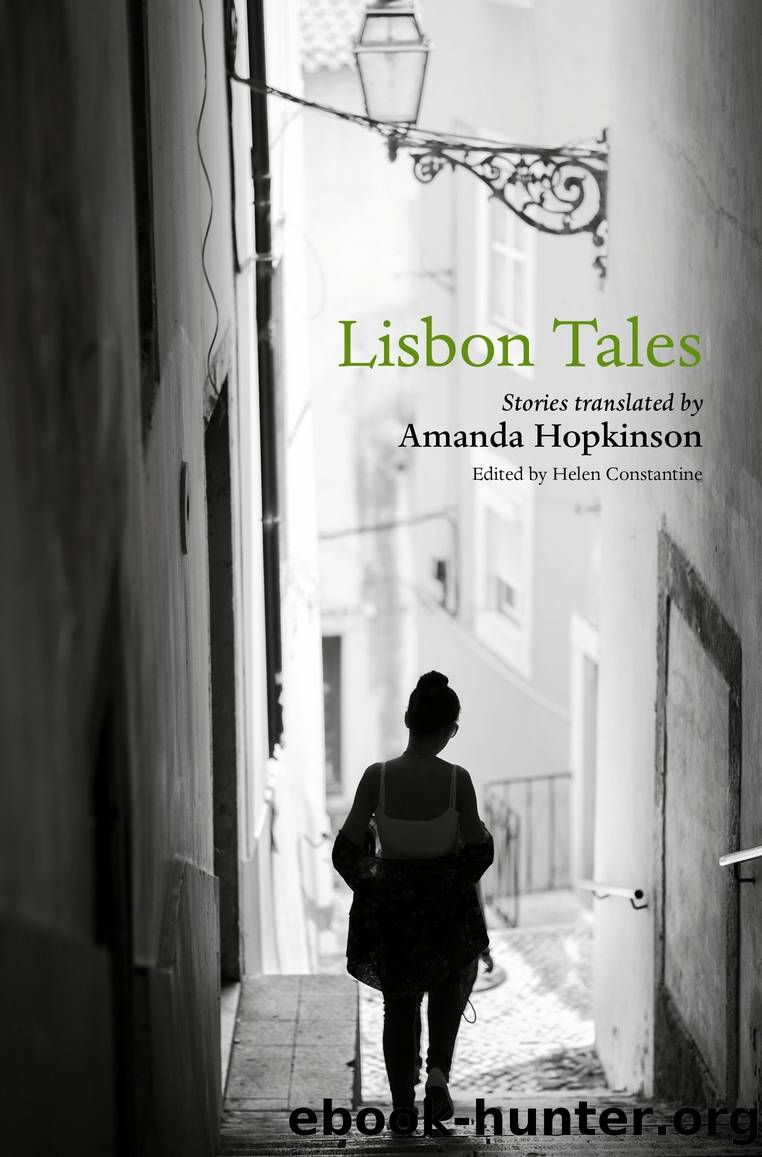Lisbon Tales by Helen Constantine & Amanda Hopkinson

Author:Helen Constantine & Amanda Hopkinson [Constantine, Helen & Hopkinson, Amanda]
Language: eng
Format: epub
ISBN: 9780192521323
Publisher: OUP Oxford
Published: 2019-03-25T00:00:00+00:00
Walking in Lisbon
José Saramago
Here is the collar. The traveller made a promise and now he keeps it: as soon as he gets to Lisbon, he will go to the Archaeological Museum and look for the collar worn by the slave owned by the Lafetá family. On it can be read the following words: âThis negro belongs to Agostinho Lafetá do Carvalhal do Ãbidos.â The traveller is repeating it again here in order to impress it on forgetful memories. If a price were put on this object, it would be worth millions upon millions: as much as the monastery of the Jeronomites next door, as much as the tower of Belém, as the presidential palace, as all the cars put together in one huge traffic jam, probably as much as the entire city of Lisbon. This collar is just that, a collar that hung round the neck of a man, soaked by his sweat, and perhaps also some drops of blood from a lash of the whip aimed at the back but which missed its target. The traveller is truly grateful to whoever picked it up and did not destroy the evidence of such a horrendous crime. Since he has never refrained from speaking his mind, however outlandish his views may have seemed, he will now make another judgment: that the collar of Agostinho de Lafetáâs black slave should be placed in a room all of its own, so that there will be nothing to distract visitors from it, and no one could say they had not seen it.
The Archaeological Museum has many thousands of exhibits that the traveller will not mention. Each of them has its own history, from the Palaeolithic age to the nineteenth century, and they all have something to teach us. The traveller can imagine starting with the earliest and going down through history to the most recent. Apart from a few well-known gods and Roman emperors, the rest are unknown, faceless and nameless. Every object has its description, and the traveller discovers to his astonishment that when it comes down to it, the history of mankind is the history of these objects and the words used to name them, the links between words and objects, their use and subsequent neglect, how, why, where, and by whom they were made. Envisaged like this, history does not become cluttered with names, it is the history of material acts, of the thoughts that shaped them and the way they shaped thoughts. For example, it would be good to take oneâs time to find out about this bronze goat or that anthropomorphic plate, this frieze or that chariot dug up in Ãbidos, so near to Carvalhal, in order to show that it is both possible and necessary to relate one thing to another in order to understand each.
The traveller regains the street and feels lost. Where should he go now? What is he to visit? What shall he leave aside, either on purpose or because of the impossibility of seeing
Download
This site does not store any files on its server. We only index and link to content provided by other sites. Please contact the content providers to delete copyright contents if any and email us, we'll remove relevant links or contents immediately.
| African | Asian |
| Australia & Oceania | Canadian |
| Caribbean & Latin American | European |
| Jewish | Middle Eastern |
| Russian |
The Hating Game by Sally Thorne(18979)
The Universe of Us by Lang Leav(14971)
Sad Girls by Lang Leav(14272)
The Lover by Duras Marguerite(7762)
The Rosie Project by Graeme Simsion(6125)
Smoke & Mirrors by Michael Faudet(6076)
Big Little Lies by Liane Moriarty(5661)
The Shadow Of The Wind by Carlos Ruiz Zafón(5555)
The Poppy War by R. F. Kuang(5506)
Memories by Lang Leav(4713)
An Echo of Things to Come by James Islington(4708)
What Alice Forgot by Liane Moriarty(4529)
From Sand and Ash by Amy Harmon(4339)
The Poetry of Pablo Neruda by Pablo Neruda(3998)
The Tattooist of Auschwitz by Heather Morris(3765)
Ficciones by Jorge Luis Borges(3530)
Guild Hunters Novels 1-4 by Nalini Singh(3364)
The Rosie Effect by Graeme Simsion(3336)
THE ONE YOU CANNOT HAVE by Shenoy Preeti(3262)
